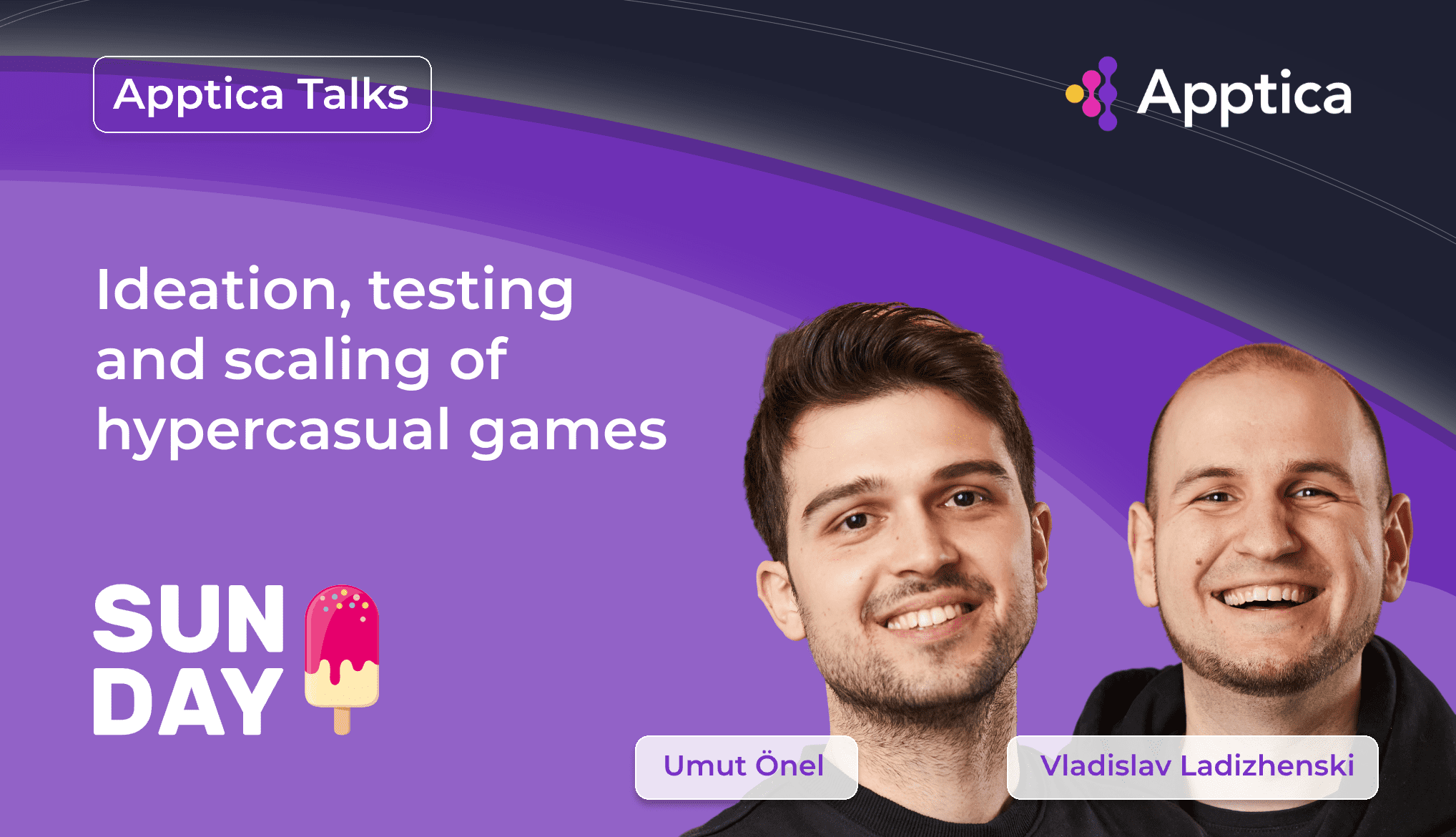Apptica Talks. Episode #3. Ideation, testing and scaling of hypercasual games with Vladislav Ladizhenski and Umut Önel from Sunday
In this episode Apptica Talks about ideation, testing and scaling of hypercasual games with Vladislav Ladizhenski and Umut Önel from Sunday.

In this episode Apptica Talks about ideation, testing and scaling of hypercasual games with Vladislav Ladizhenski and Umut Önel from Sunday.
Sunday - a hypercasual publisher that creates extremely engaging and addictive mobile games with smart and player-friendly monetisation
What we have talked about:
- Ideation approach
- Prototyping and testing strategies
- Scaling of the games
- And some trends wrapped up in nice metaphors from Vlad ;)
Key takeaways:
Prototyping and testing:
- You can take a proven mechanic and twist it or merge 2 proven mechanics, but it doesn’t guarantee that your game with a different gameplay will succeed. However, this technique is popular in the whole industry, even in PC and console.
- The games with a twisted popular core mechanics are likely to have a higher marketability and higher performance as you show a similar inventory, on the monetization side you can expect a high fuel rate and enough demand to secure high ECPMs. However, a tough competition puts pressure on developers to outperform on the creative level and on the LTV level, so, you should be ready to pay more for the users compared to your competitors.
- Prototyping strategy is to make IPM products first, only the video in order to test marketability. Basic gameplay video with some creative scenarios allows keeping a low budget and a fast prototyping process. If you have good KPIs, then you can focus on game development and MVP.
- Regarding KPIs in the prototyping stage, it’s hard to pinpoint specific numbers as first we test marketability and then retention, user behaviour. It’s important to keep in mind that some games with more in-depth level might have lower marketability, but then show better results in the last phases of the user performance. From one hand, it’s recommendable to test as early as possible your idea to get feedback, but, from the other hand, not too early not to kill a potential great idea.
- The main tool for testing is user testing, i.e. gathering the feedback from the users that are not experienced in games (colleagues, for example, from other departments).
- You can also try new technologies, like “Brainamics” - a playtesting company that converts brain signals into emotional feedback. This way they aim at increasing the accuracy of the playtesting side. But for hypercasual it might be quite hard to use it.
- If you want to get quick results at a testing stage, it’s better to use social networks.
- Many publishers go for familiar networks that are used for their monetization strategy due to easy setup. However, it does not represent the overall future marketability of the game. If you have in-app purchases, DSPs could be a good choice as they have great algorithms of finding the right users and a simple setup covering all the networks.
- Unity is a good choice, it’s a good representative for other SDK networks.
Scaling:
- If your game is content heavy, then you need a localisation. You also need as many networks as possible to scale your game smartly from one geo to another (+ test new networks as there might be a hidden champion).
You can learn more about Sunday on the website and get more insights in its blog.
🎧 Put on your headphones and enjoy:
Spotify
Apple Podcast
Google Podcast
YouTube




